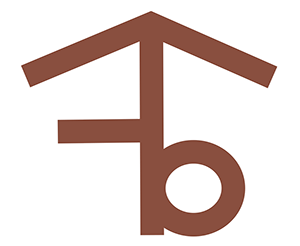Currently Empty: 0.00zł
Hypertension Diagnosed: Understanding the Process
Hypertension, likewise known as hypertension, is a typical condition that affects millions of people worldwide. Typically referred to as the “quiet awesome,” high blood pressure commonly goes undetected up until it brings about a lot more severe health problems. Proper medical diagnosis as well as surveillance play a crucial function in managing this problem successfully. In this write-up, we will explore just how hypertension is identified, the different tests included, and the value of routine examinations.
The Role of High Blood Pressure Measurements
The initial step towards diagnosing hypertension entails determining blood pressure. Blood pressure is the force exerted by the blood versus the wall surfaces of the arteries as it streams through them. It is normally reported as 2 numbers – the systolic pressure (the greater number) and the diastolic pressure (the reduced number).
Healthcare experts use a device called a sphygmomanometer to determine blood pressure. This tool contains a blow up cuff that is twisted around the upper arm and also a stress scale that displays the reading. The cuff is filled with air and then slowly released while the medical care expert listens for the audios of blood flow making use of a stethoscope or an electronic sensor.
The high blood pressure measurement is revealed in millimeters of mercury (mmHg) and is tape-recorded as systolic stress over diastolic pressure (e.g., 120/80 mmHg). A regular high blood pressure reading is generally thought about to be around 120/80 mmHg.
- Normal Blood Pressure: A blood pressure reading below 120/80 mmHg is considered regular.
- Raised Blood Pressure: If the systolic stress varieties in between 120-129 mmHg and the diastolic stress is listed below 80 mmHg, it is classified as elevated blood pressure.
- High blood pressure Stage 1: When the systolic stress varieties from 130-139 mmHg or the diastolic pressure is in between 80-89 mmHg, it is classified as stage 1 hypertension.
- High blood pressure Stage 2: Stage 2 high blood pressure takes place when the systolic stress is 140 mmHg or greater, or the diastolic pressure is 90 mmHg or greater.
It is important to keep in mind that high blood pressure can vary throughout the day, so a solitary raised reading might not always show high blood pressure. As a result, further examination is needed to verify uromexil forte rossmann the diagnosis.
Validating the Medical diagnosis
If a preliminary blood pressure dimension recommends hypertension, medical care experts typically perform additional examinations to validate the diagnosis as well as analyze the general cardiovascular wellness of the individual. These tests might include:
- Repeat Blood Pressure Dimensions: To guarantee accuracy, health care professionals might measure blood pressure on several celebrations. This helps determine any type of white coat hypertension, a condition where blood pressure increases in a clinical setting as a result of anxiousness or stress.
- Ambulatory High Blood Pressure Surveillance: Ambulatory blood pressure monitoring entails using a portable high blood pressure monitoring device for 24 hours. This examination supplies an extra extensive understanding of an individual’s blood pressure pattern throughout the night and day.
- Home Blood Pressure Monitoring: Home high blood pressure tracking needs individuals to determine their high blood pressure consistently making use of a blood pressure screen at home. This method assists medical care specialists collect a broader variety of data and evaluate blood pressure levels over an extended period.
- Lab Tests: Along with blood pressure measurements, medical care experts might additionally ask for research laboratory examinations to examine overall cardiovascular wellness. These tests might consist of blood examinations to determine cholesterol levels, blood glucose levels, and also kidney feature.
The Significance dialine en farmacias of Regular Exams
Regular examinations are important for early discovery, medical diagnosis, and also management of high blood pressure. Many people might not experience any type of obvious signs and symptoms, making it even more critical to keep an eye on blood pressure degrees frequently. Medical care specialists suggest adults to have their blood pressure checked a minimum of when every 2 years if their analyses are consistently within the normal array. For people with elevated blood pressure or a previous diagnosis of high blood pressure, more regular tracking is suggested.
Throughout normal exams, medical care specialists not just gauge high blood pressure yet additionally assess other risk variables such as family members history, way of living behaviors, and existing clinical conditions. This extensive assessment aids in producing a personalized treatment strategy and also surveillance progress in time.
Conclusion
Identifying high blood pressure includes determining blood pressure as well as examining the total cardio wellness of an individual. Exact medical diagnosis is important for starting proper treatment and also way of life modifications to take care of hypertension efficiently. Routine check-ups as well as keeping an eye on play a crucial role in protecting against difficulties related to this quiet condition. By remaining cautious and positive, people can take control of their blood pressure as well as keep ideal wellness.

